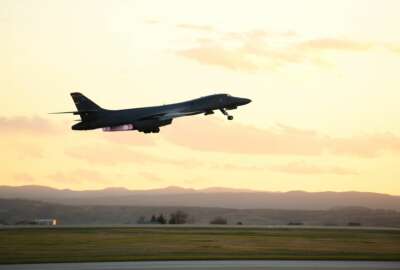DoD launches project to quickly shift AI from labs to real-world warfighting
The AI and Data Acceleration initiative is meant to turn artificial intelligence from a buzzword to something that's actually used throughout the department,...
The Defense Department has a new plan to speed up its adoption of artificial intelligence technologies. The AI and Data Acceleration (ADA) initiative, launched this week, is meant to make sure DoD isn’t just working with AI in experimental settings, but moving it into practical applications in combatant commands around the world.
Within the next 30 days, the department plans to start dispatching teams of data experts to all 11 of its geographic and functional commands. Their first task will be to take stock of their local information storehouses, including by cataloging the data feeds commanders currently use to make decisions — and that AI algorithms could potentially help with.
“We chose the combatant commands specifically because they’re real decision environments, and like in any large enterprise, if you’re going to use artificial intelligence and start bringing data-driven tools to bear, you have to understand your data, you have to clean up your data, and you have to get the data where you want it,” Lt. Gen. Michael Groen, the director of DoD’s Joint Artificial Intelligence Center, told reporters Thursday. “Combatant commanders and their staffs are built to fight as a joint force. They’re not built to do those technical functions, so they need help.”
Next, within about 90 days, DoD will deploy a second set of “flyaway teams” to start the work of actually applying algorithms to that freshly-curated data.
Groen said the objectives are two-fold: The first is to give combatant commanders some AI-assisted decision tools. The second is to teach the department as a whole to apply AI to real-world warfighting problems, inside the same overseas bureaucracies they’d have to work in during a potential future conflict.
“You can do it in a lab, but when you bring that lab-tested capability out to the combatant commander or to someone on the tactical edge, you’re going to realize, ‘Holy cow, the latency here is horrible,’ or, ‘Holy cow, the reliability and the uptime of the servers that I require is not sufficient,’” he said. “By doing this experimentation in the places that we expect our algorithms to work, we can help inform upgrades to networks, upgrades to architecture, or re-architecting things that have to be completely redone in a data-driven environment.”
And the department expects those AI implementation teams to operate on a longer-term basis than the initial data cleanup teams. They’re designed to add new capabilities to combatant commands on an incremental basis, an approach DoD likens to modern software engineering.
Kathleen Hicks, the deputy secretary of Defense, said the teams will need to be mindful of the commands’ busy operational schedules, but DoD wants AI experimentation to be a regular rhythm of the military exercises commanders already conduct.
“As we complete these episodic exercises and experiments, we intend to leave behind capability in our wake,” she told a JAIC-sponsored conference earlier this week. “True to our software engineering mindset, we aim to iteratively gain capability and rapidly scale to other combatant command environments with similar challenges. This will ultimately produce data and operational platforms designed for real-time sensor data fusion, automated command and control tasking and autonomous system integration. It will allow data to flow across both geographic and functional commands.”
And once that starts to happen, department leaders think they’ll have the building blocks in place for large-scale data management and automation platforms that can serve the entire DoD.
“By generat[ing] centralized and scalable data, we will be accelerating the gains to be had from leveraging AI,” Hicks said. “The ADA initiative recognizes the challenges we’re facing and provides a systematized method to harness data and AI. It creates a concrete path forward for a mission space that has too often appeared to be more rhetoric than action.”
The experimentation work the new ADA teams will do isn’t just focused on data management and technical issues.
Groen said the department wants to use the process to find answers to a broad array of challenges that have, so far, held AI and machine learning back from large scale implementation throughout the military services.
And it’s quite possible the discovery process will provide ammunition to support at least some revisions of DoD IT policies.
“Maybe it’s insufficient to have an Authority to Operate structure where we make decisions about what can go on what network in a very deliberative way. That’s something we may want to update,” he said. “That’s the kind of stuff that we hope to do. We want to understand policy obstacles, cultural obstacles, technical obstacles, network obstacles. We can write design documents and build AI in the lab forever. But until we can actually employ them in the environments they’ll be expected to operate in, we’re not going to know for sure, and that’s unacceptable to us.”
Copyright © 2025 Federal News Network. All rights reserved. This website is not intended for users located within the European Economic Area.
Jared Serbu is deputy editor of Federal News Network and reports on the Defense Department’s contracting, legislative, workforce and IT issues.
Follow @jserbuWFED







